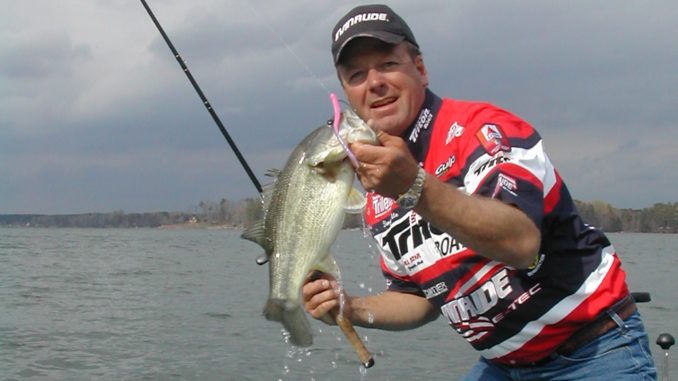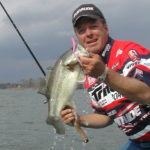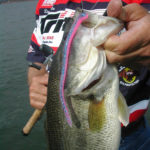
April is prime time for these ‘special’ plastics
In April across South Carolina, a lot of bass have just spawned, there are still a few fish spawning, and you can even catch a few prespawn bass.
When fish are in a prespawn mood, you can use a jig or a spinnerbait and catch a lot of big bass, but in April, I start fishing soft-plastic baits, varieties of worms and different kinds of rigs.
The first thing I do is start fishing a weightless, floating worm. We’ve been using them for 30 years in the Carolinas, but they’ve only gotten popular nationally in the past 10 years.
I rig a floating worm Texas-style on a 3/0 or 4/0 VMC offset worm hook, so that it’s basically weightless. I can work it at the surface by twitching my rod tip to keep it moving from side to side, letting it sit still, then jerking it again.
To me, a floating worm is a search bait, the same way a small crankbait or a spinnerbait is a search bait. You’re working it quickly and covering a lot of water. The difference is, it’s more of a clear-water bait; spinnerbaits are most productive in stained water, but floating worms are visual baits. That’s why you use all kinds of bright colors: merthiolate, yellow, white and bubble gum. By April, the water in most of our lakes has started to clear up after the runoff kept it stained for much of February and March.
To use a floating worm, I like to be able to drop my bait in the water and see it down to about 18 inches. If it disappears when it gets down eight or 10 inches, I’ll know the water is stained enough to use a spinnerbait.
I love to fish topwater baits, and while a floating worm doesn’t draw an explosive strike like a topwater bait often will, you can still see the bass come up and eat the bait. That’s one more reason it’s important to fish it in clear water; you can see the bait as you retrieve it, and you can see the strike.
When I’m fishing a floating worm, I like to fish it on a 6½-foot, medium action All-Star baitcasting rod and a Pfleuger Patriarch reel. I know a lot of fishermen who fish a floating worm on a spinning rod, and they’re great floating worm fishermen. It’s just a personal preference.
When I’ve got a floating worm tied on, I’m using regular monofilament instead of fluorocarbon or one of the super braided lines. Fluorocarbon will sink and will pull your worm down in the water, so you want to use mono. I use Berkeley Trilene Big Game in 10- to 12-pound test.
I like to go down the bank throwing a floating worm at anything I see — or don’t see. You’ll get a lot of smaller fish that will come up and eat a floating worm, but you’ll catch big fish on them, too. I’ve seen a lot of big bass caught on a floating worm; my best is an 8-pounder. You’re really targeting post-spawn fish that are guarding beds or fry, but you’ll catch some of those big spawning and prespawn fish that are in their shallow, looking up at the surface.
The other plastic bait I start off with in April is a Senko-type or “flutter” worm. It’s heavier, has more salt in it, and it will fall slowly and with a real good action when you fish it weightless.
I fish a Trigger-X flutter worm, and I’ll fish it on the same rod-and-reel combo and hook I use with a floating worm. The big difference is the line. Because I’m not trying to keep this bait on top, I’ll fish it on fluorocarbon; I’m not worried about it sinking, in fact, it’s the great action it has as it sinks down through the water column. I’ll fish it on 10- to 15-pound Trilene 100 Percent Fluorocarbon.
I’m not trying to cover water with a flutter worm; I’m fishing it at specific targets: stumps, pier pilings, laydowns, willow trees and flooded bushes. I want to pitch that bait in there and just let it sink down next to the cover. If I don’t get a bite on the fall, I’ll lift it and move it a few feet and let it sink again.
Since you’re not keeping the bat at the surface, you’re not going to use the same, bright colors that you picked out for floating worms. You want more natural shades like pumpkin, green pumpkin, watermelon, bluegill.
While a flutter-type worm is a visual bait, you’re fishing it differently, and your results will be different. You’ll catch a lot of big fish that aren’t aggressive enough to come to the surface and chase a bait. You’ll catch better numbers on a floating worm but bigger fish on a flutter worm — including some bedding fish.
So this month, when you head for the water, make sure you have a couple of rods rigged with these two very productive kinds or worms. You could just be signing up for a marriage made in fishing heaven.






Be the first to comment